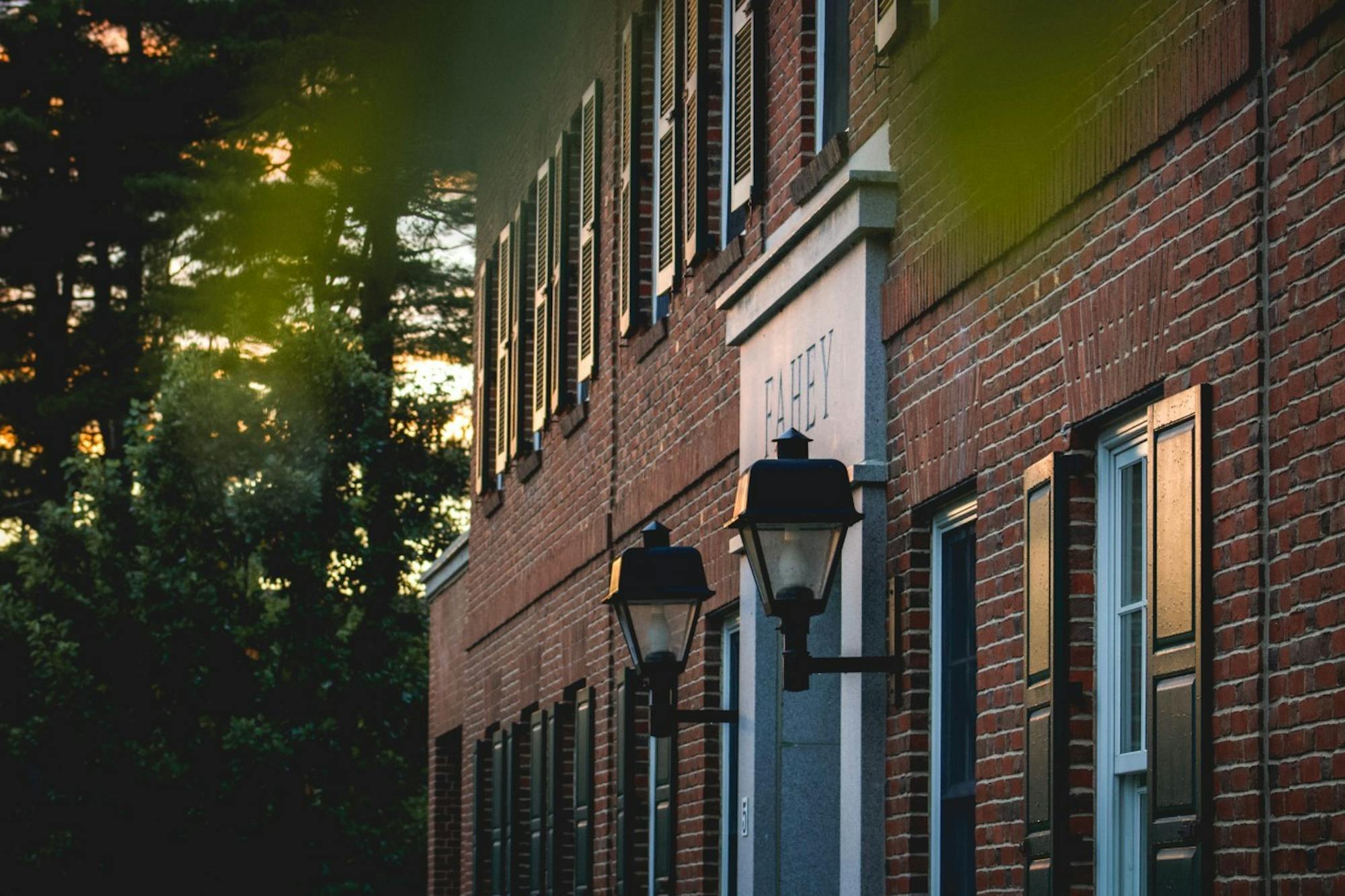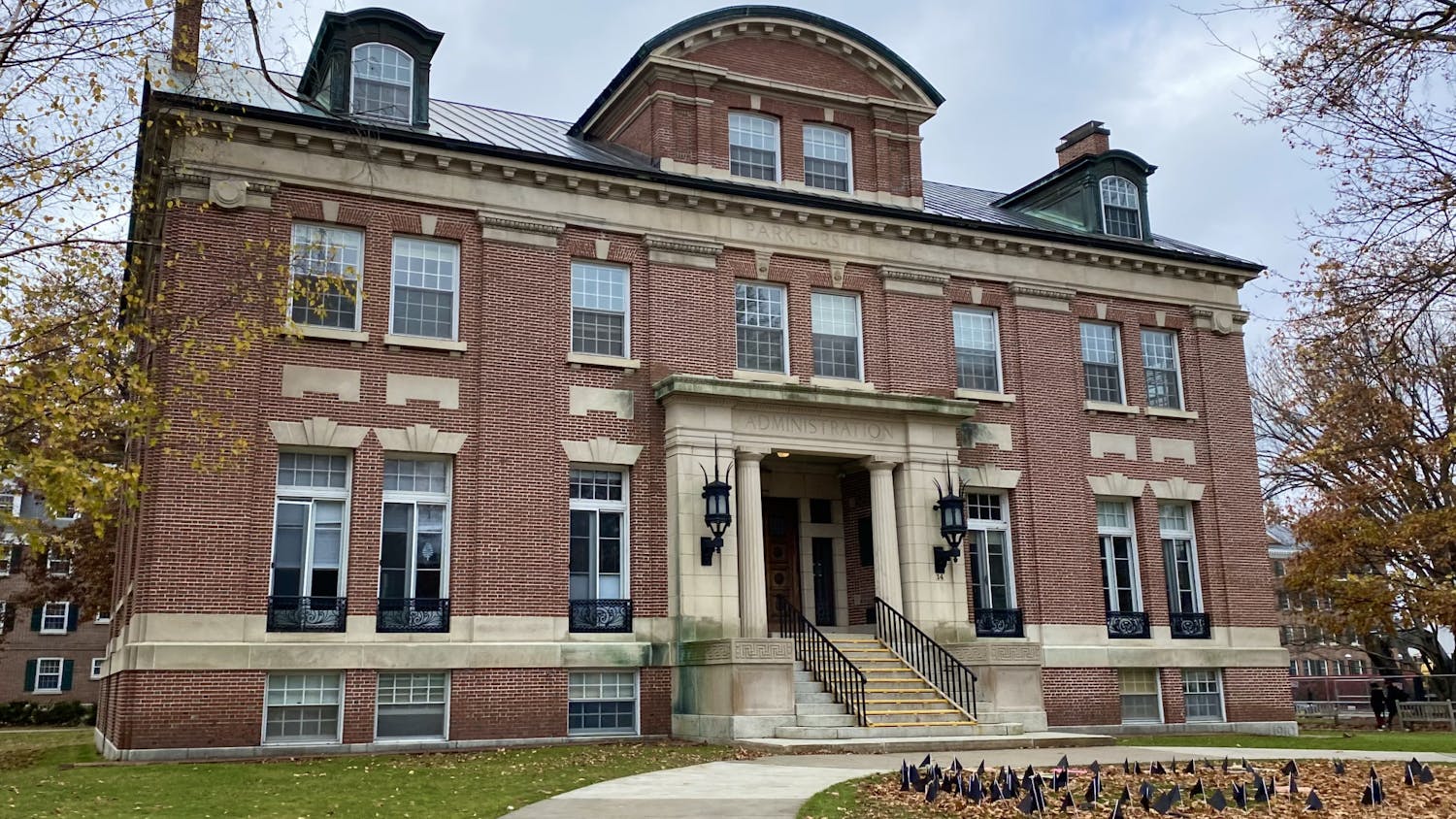This article is featured in the 2021 Homecoming special issue.
As Dartmouth approaches the 50th anniversary of its vote for coeducation, the growth of the College’s undergraduate population since that decision has impacted student access to on-campus housing. Over the last few decades, the decision to expand the student body with coeducation — combined with the lack of new dormitory construction — has led to many students struggling to find housing, especially during the fall term.
When the Board of Trustees voted in November 1971 to institute coeducation and implement the Dartmouth Plan — now known as the D-Plan — the College anticipated increasing enrollment of undergraduates. According to a report by the faculty Committee on Year-Round Operation in September 1971, the implementation of both coeducation and the D-Plan would allow the College to enroll up to 3,400 students by the 1975–76 academic year, up from about 3,000 students.
In deciding to implement co-education, the Board of Trustees opted to increase the total number of admitted students to ensure that the same number of men would be admitted as before coeducation. College archivist Peter Carini previously told The Dartmouth that the primary “selling point” of co-education paired with the D-plan was to “free up dorm space” without “displacing any male applicants.”
“[We have an] earnest hope that Dartmouth would remain competitive in male numbers with Harvard, Yale and Princeton...to have a large and diverse enough body of undergraduates to staff [male] athletics teams without skewing admissions,” former Dean of the College Carroll Brewster wrote in a letter to the Board of Trustees while they were discussing coeducation in Sept. 1971.
The prospect of decreasing the number of male students admitted to the College to maintain an undergraduate population of 3,200 students was relatively unpopular among both students and alumni. In a January 1969 editorial titled “The Sooner the Better,” one Dartmouth student wrote that he “generally opposed cutting the male enrollment” of Dartmouth as a “permanent solution” to make co-education possible.
In a 1971 survey of alumni by the College, only 20% of alumni indicated that they would approve of decreasing the enrollment of male students by 1,000 to accommodate 1,000 more women. In contrast, some 44% of alumni supported admitting 1,000 more women, if there was “expanded use” of summer term and “expanded off campus programs” to keep the number of students in residence around the average of 3,000 at the time.
With the decision to increase the size of the class, the College acknowledged that it would need to improve the “physical plant” of the College to accommodate more students. The Sept. 1971 CYRO Report noted that the College had already been facing overcrowding in Thayer Hall — now known as the Class of 1953 Commons — as well as dorm spaces.
“35 students are housed in rooms which are seriously overcrowded while crowding exists in another 145 rooms,” the committee wrote at the time. “With the need to improve some existing dormitories as residential communities, a new facility that can accommodate at least 200 persons is needed.”
After the implementation of coeducation, some alumni voiced concerns about the potential for overcrowding. In an article published in the December 1975 Dartmouth Alumni Magazine, Dan Nelson ’75 wrote that during his time as a student, the solution to overcrowding was to “simply jam more students into available spaces” by converting single rooms to doubles and doubles to triples. Ellis Briggs ’21 wrote in an April 1975 issue of the Dartmouth Alumni Magazine that the decision to implement year-round education as a “panacea” created an “uproar in housing.”
In response to the housing crisis, the Board of Trustees voted in April 1975 to approve the construction of a new “apartment-style dormitory” to house 72 students near the River Cluster, according to a Dartmouth Alumni Magazine article. The board also opted to use the Hanover Inn Motor Lodge — now The Lodge, a South House housing community dorm — for fall, winter and spring student housing.
However, in spite of new dormitory construction and renovations, the housing crisis in Hanover has persisted through the decades. In 1994, some 180 students were left without housing for the fall term when a record 3,845 students enrolled for the term. To deal with the problem, the College at the time used dormitory lounges and faculty apartments to house some students, and offered reduced rent rates and higher dorm and class priorities to students willing to take an off-term.
Facing a similar crisis in 2001 due to an unexpectedly high admissions yield for the Class of 2005, the College opted to create six “Tree Houses” on the lawn in front of the River Cluster to accomodate students on the housing waitlist. The houses, which were regarded as some of the “worst housing on campus,” were ultimately torn down in the fall of 2006. In 2014, the large number of housing requests for fall term, due “largely” to the size of the Class of 2018, caused some common rooms to be converted into living spaces, and some students were placed into “accommodations they did not request.”
More recently, the COVID-19 pandemic has caused demand for fall on-campus housing to rise after a year of remote learning has left students eager to access campus. Coupled with a limited number of study abroad programs running this term, the housing crisis is plaguing the College yet again. As a result, the College offered $5,000 to up to 200 students who were willing to give up their on-campus housing — and once again, certain common spaces were converted into living spaces and larger singles and doubles became doubles and triples.
With a lack of housing options on campus, students have looked to Hanover and the surrounding Upper Valley area to find housing — which students described as “nearly impossible” to find on such short-notice. The high rent prices in the area causes problems for the undergraduate and graduate populations alike, with graduate students caught between high on-campus housing prices, a lack of available off-campus housing due to the increased number of undergraduates living off-campus and the large enrollment of this year’s incoming Tuck School of Business class. Last August, the Casque and Gauntlet building — used by the senior society of the same name — was leased to Tuck to be used for graduate student housing.
While there have been proposals to create more housing in Hanover, there has been little progress. A plan proposed by parents to create modular housing was rejected by the College this summer, parents told The Dartmouth. A similar proposal to build a dorm complex at the site currently occupied by House Center A — commonly known as “The Onion” — and several tennis courts was put on hold by the pandemic. Though fall is now in full swing, Dartmouth’s housing problems will likely not be over soon.




